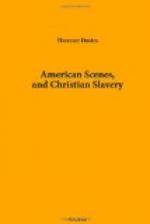I. BIBLICAL LITERATURE.—This department embraces—1. Biblical Geography and Antiquities. 2. Principles of Biblical Interpretation. 3. General Introduction to the Old and New Testaments, and Particular Introduction to the Pentateuch, Gospels, and Acts. 4. Interpretation of the Gospels in Harmony and of the Acts. 5. Interpretation of the Historical Writings of Moses. 6. Particular Introduction to the several Books of the Old and New Testaments. 7. Hebrew Poetry, including Figurative and Symbolical Language of Scripture. 8. Interpretation of Psalms, Proverbs, and Ecclesiastes. 9. Epistles to Romans, Corinthians, Timothy, and I Peter. 10. Nature and Fulfilment of Prophecy, particularly in reference to the Messiah. 11. Interpretation of Isaiah, Zechariah, and Nahum. 12. The Revelation, in connection with Daniel.
II. CHURCH HISTORY AND POLITY.—In this department a regular course of lectures is given on the History of Doctrines to all the classes, and on Church Polity to the senior classes.
III. SYSTEMATIC THEOLOGY.—In this department are included—1. Cause and Effect. 2. Mental Philosophy. 3. Atheism, its History and Hypothesis, Arguments, Objections, and Folly. 4. The Being, Character, and Attributes of God. 5. Reason, Light of Nature, Necessity of Revelation. 6. The Truth and Inspiration of the Bible. 7. Doctrine of Revelation.
IV. SACRED RHETORIC AND PASTORAL THEOLOGY. First
Year.—Lectures on
Rhetoric and Elocution. Exercises in Reading
and Elocution. Second
Year.—Written Discussions, with Public
Criticism in the class. Third
Year.—Exercises in criticising Skeletons
continued. Public and
Private Criticism of Sermons. Lectures on Preaching
and on Pastoral
Duties.
The annual term of study begins on the second Wednesday in September, and closes on the second Wednesday in June, which is the Anniversary. The term closes with a public examination.
Dr. Andrew Reed, who visited Lane Seminary in 1834, refers to it as a model manual-labour institution. With the advancement of society around, it has lost in a great measure that peculiarity. There is now but little done in that way, though it is still recorded in italics among its regulations, that “every student is expected to labour three hours a day at some agricultural or mechanical business.” “While the leading aim of this regulation,” it is added, “is to promote health and vigour of both body and mind, compensation is received according to the value of the labour.”




